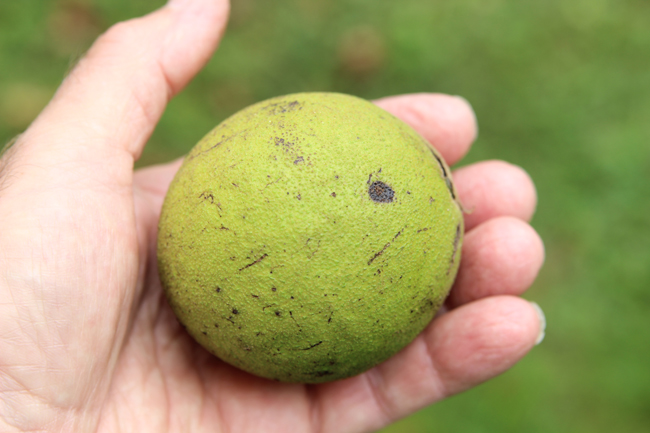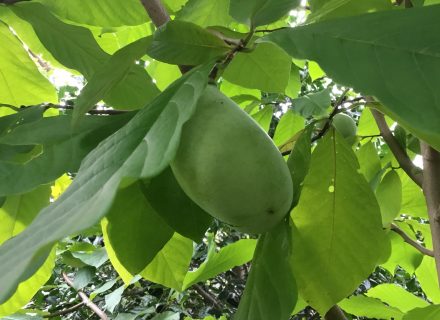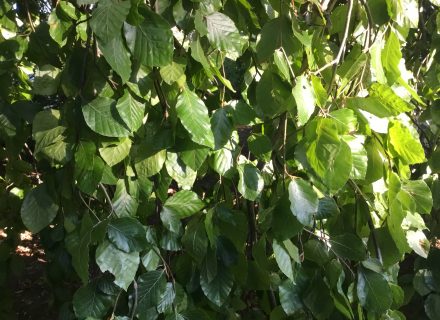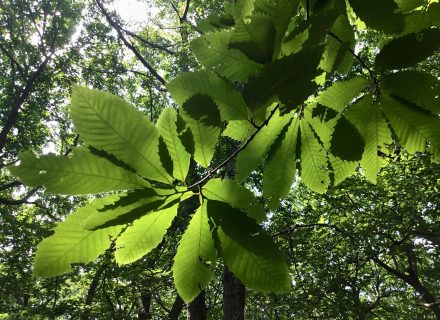Latin name: Juglans nigra
Location: Black walnut trees can be found in various areas of the Island. Several large ones tower over houses in the lower Heights near Chase Creek. The Havens House grounds are home to three tall specimens and an impressive grove can be spotted along the Gardiner’s Creek trail at Sylvester Manor. Currently laden with green, baseball-size fruit that contain edible nuts, black walnut trees are impossible to miss.
Tree stats: The native black walnut ranges from Massachusetts to Alabama and west to Nebraska. In ideal conditions, the tree can reach as high as 150 feet and live up to 250 years. If you have the room (and I mean lots of room), it makes a wonderful landscape tree… with some caveats.
Tree warfare: Aside from its formidable size and fruit, black walnut also produces juglone, an allelopathic substance that inhibits the growth of many plants under its canopy or near its roots. Juglone is present in all parts of the tree but is most concentrated in the buds, nuts, and roots. Shrubs such as lilac, blueberry, and hydrangea are sensitive to the compound but numerous others aren’t. We often think of trees as benign, passive life forms. Not so! Black walnuts and other trees utilize biochemical weaponry as a defense mechanism to reduce competition. If you have a black walnut in your yard and have been unsuccessfully trying to grow vegetables or perennials nearby, keep the tree and move the garden.
A tree’s worth: Since colonial times, black walnut wood has been treasured for furniture, veneer, and cabinetry. According to Diana Wells’ Lives of the Trees, “Walnut wood, once cured, is very stable, and it was particularly prized for making gunstocks, as it doesn’t warp and spoil the alignment so necessary for an accurate aim.” The wood is even used for bicycle frames. An Ohio company called Sojourn Cyclery offers a gorgeous black walnut electric bike for around $9,000. Unfortunately, the value of high-quality black walnut trees has made them vulnerable to poaching. In one prosecuted case, a Kentucky man illegally harvested $85,000 worth of trees belonging to an unsuspecting Indiana landowner.
A food source: Black walnuts are host to over a hundred insects, including the larva of the spectacular Luna moth. The caterpillar feeds on the leaves and then drops to the ground where it pupates in leaf litter. The moth that emerges, with pale green, elegantly-shaped wings, is one of nature’s wonders.
A tasty nut: Several years ago my friends Keith and Connie Lustofin collected a bucket full of black walnuts by picking them off the ground and (perilously) shaking branches. As the walnut is a notoriously difficult nut to crack, Keith constructed an outdoor vice in which the nuts were placed. The trick was cracking their tough shells without damaging the meat, which can be interlocked with the shell. Happily, this laborious process resulted in Keith’s sublime, homemade black walnut cake. Sadly, because of the effort involved, it was a confectionery experience that will not be repeated soon.
Photos: Tim Purtell




